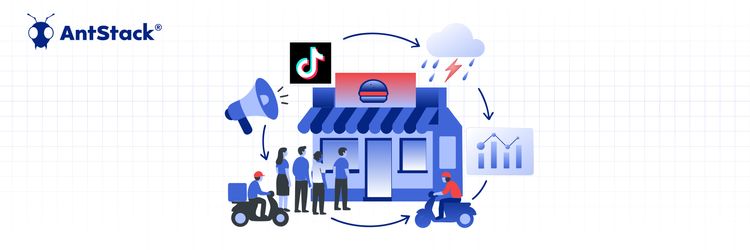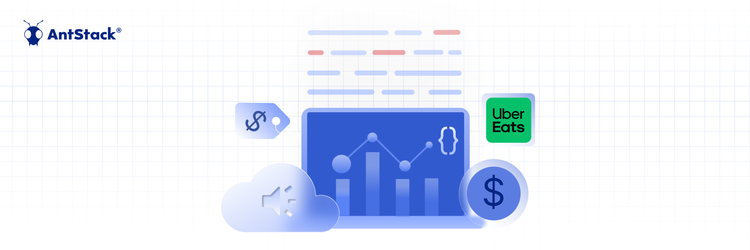Demand isn’t predictable: Why Middleware for QSRs Should Be Infrastructure-Free
When I was in Chicago recently, I stopped by one of my favourite burger joints, a classic QSR chain that built its reputation on in-store experience. But a couple of days later, when I tried to order the same meal through their mobile app, the item was missing. I checked on other delivery apps; it wasn’t showing anywhere. Eventually, I gave up and ordered from somewhere else.
Now, I may be wired to notice these things more than most. But this wasn’t just a tech glitch. It’s a business problem that quietly chips away at revenue, operational confidence, and brand consistency.
Behind the scenes, the Menu API is carrying far more weight than it was designed for. It’s become the foundation for pricing, promotions, inventory, third-party sync, and real-time customer experience. And when that foundation cracks, the whole operation feels it.
We’ve been working with QSR chains to solve this problem by architecting and building their Menu API.
The Operational Drag Hidden in Static Menu APIs
Modern QSRs need a Menu Infrastructure that behaves less like static content and more like a real-time system of record.
| Capability | Traditional Menu API | Real-Time Menu Infrastructure |
| Menu Updates | Code deployments | API-based schema mutations |
| Platform Distribution | Manual or batch sync to delivery partners | EventBridge-powered real-time fanout |
| Regional Customization | Hardcoded overrides by location | Rule-based visibility by region/store |
| Promotion Rollouts | Batch jobs with fixed schedules | Dynamic scheduling and targeting |
| Traffic Handling | Static backend under load | Auto-scaling Lambda + DynamoDB |
| Cross-Channel Consistency | Delay-prone, error-prone sync | Schema-driven, source-of-truth model |
The Menu Rollout Bottleneck
In most QSRs, menu distribution remains a centralized, top-down process. Headquarters defines the menu, which is pushed to all outlets, irrespective of regional performance, consumer preferences, or operational constraints.
A promotion that drives sales in New York might stall in Texas. And any local override requires a centralized release cycle, backend intervention, or full redeployment.
The Serverless Shift That Works
A serverless architecture eliminates these dependencies. By leveraging AWS AppSync as a unified GraphQL interface and Amazon DynamoDB as the backend datastore, menus become dynamic, queryable, and region-aware.
Updates, like pricing, availability, or category changes, are treated as real-time data mutations, not code deployments. This shift decouples rollout from engineering cycles, giving central teams control while enabling local menu logic to adapt on the fly.
It’s not just faster, it’s operational intelligence, purpose-built for QSR scale.
The Scalability Fragility
QSR traffic isn’t linear. Menu APIs built on static infrastructure lack scalability. A Christmas combo goes live, and mobile orders surge faster than your API can keep up. This is enough to crash endpoints, delay sync, and burn revenue during peak moments.
The Infrastructure Designed for Spikes
Serverless architecture absorbs spikes by design. AWS Lambda and API Gateway auto-scale with demand, without pre-warming or capacity planning. DynamoDB handles high-volume reads and writes with low-latency consistency, even during peak loads.
By integrating EventBridge and Step Functions, QSRs can offload heavy workflows into asynchronous orchestration, isolating bursts without blocking core services. Menu updates, orders, and promotions all execute independently, keeping the user experience fast and uninterrupted.
The Third-Party Disconnect
Every QSR today is a multi-channel business, with its own apps, in-store kiosks, and aggregator platforms. But when these systems aren't in sync, chaos compounds.
A new item in store takes hours to reflect on UberEats or DoorDash. Or worse, it shows up, but can’t be fulfilled because inventory data hasn’t synced. Orders get canceled, refunds follow, and so do churn and brand damage.
Rewriting the Sync Model
Serverless flips this model. With AWS EventBridge, every update, menu, price, or inventory, is published as an event that fans out in real time to all subscribed systems, internal or third-party. AWS Lambda functions act as translators, applying platform-specific logic or validation before syncing downstream.
API Gateway and AWS AppSync offer a unified access layer, ensuring each partner sees only what they need, with the most current data, shaped by context. You control visibility without hardcoding forks into your backend, whether dine-in exclusives, city-level pricing, or platform-specific bundles.
This approach creates a living, synchronized menu ecosystem that adapts instantly, reconciles cleanly, and operates as a true system of record across every channel.
What Real-Time Menu Infrastructure Looks Like
In practical terms, this kind of architecture does a few critical things:
- Menu updates propagate instantly across POS, mobile, web, and aggregator platforms
- APIs auto-scale based on demand, whether it’s 11 am on a Tuesday or during a surge triggered by a viral TikTok
- Updates can be made without full redeployments, thanks to dynamic schemas
- Systems talk to each other using event-driven APIs, not brittle manual processes
- And integrations with third-party platforms aren’t a week-long project; they’re designed in
Most QSR systems treat menus as endpoints to maintain. But in today’s operational reality, menus are platforms that must adapt in real time and sync across dozens of systems. Real-time, event-driven, serverless menu infrastructure creates a system-level advantage that you can roll on new combos, city-specific pricing, and third-party bundles in minutes.









